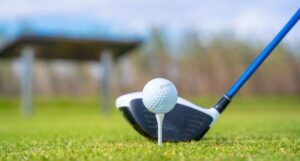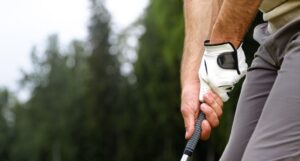Understanding the intricacies of your golf equipment can significantly enhance your performance on the course. This blog delves into the concept of spining golf shafts, explaining what it is, why it matters, and how it can lead to better builds and improved consistency in your game.
What is Spining?
Spining, in the realm of golf shafts, refers to the process of identifying the soft and stiff sides of a shaft. Each golf shaft has a weak side, often referred to as the “soft spot,” which can significantly affect how the shaft performs. By measuring and marking this weak side, builders can ensure that the shaft is installed in a way that optimizes performance.
Why is Spinning Important?
The importance of spining cannot be overstated. When a golf shaft is installed correctly, it allows for better consistency in ball flight and improved accuracy. This is because the shaft will flex and release in a way that is predictable, leading to more reliable shots. Golfers who have their shafts spined often report enhanced control and distance, making it a worthwhile consideration for anyone looking to improve their game.
Why Should You Care About Spining?
Understanding spining is essential for any golfer who wants to maximize their performance. But why should you care? The answer lies in the potential for improved consistency and accuracy on the course. When a shaft is installed with its weak side in the correct position, it allows for a more stable oscillation during a swing. This leads to a better transfer of energy from the club to the golf ball, resulting in improved distance and accuracy.
Real-World Implications
Imagine stepping onto the course with a club that feels perfectly tuned to your swing. That’s what spining can provide. It’s not just about having the right equipment; it’s about having equipment that works with your unique swing dynamics. When your golf shafts are spined, you’re not just playing; you’re playing smart.
The Benefits of Better Builds
Investing in better builds through spining can lead to several key benefits:
- Enhanced Consistency: A properly spined shaft will perform consistently across different swings, reducing the variability in ball flight.
- Improved Accuracy: By knowing where the weak side is, builders can align the shaft correctly, leading to straighter shots.
- Increased Distance: Although spining isn’t a magic bullet for speed, it can help you achieve better energy transfer, potentially leading to longer drives.
- Customized Performance: Every golfer has a unique swing. Spining allows for a tailored approach to club fitting, ensuring that your clubs work best for you.
Are You Ready for a Better Build?
If you’re considering enhancing your golf game, consider the benefits of better builds through spining. Not only does it help in achieving optimal performance, but it also ensures that your clubs suit your playing style. Want to learn more about how custom club fitting can elevate your game? Check out our article on custom club fitting for more insights.
Understanding Spining vs. Puring
When discussing the nuances of golf shafts, you may come across two terms: spining and puring. While they may seem similar, they serve different purposes in the club-building process.
What is Puring?
Puring is a more advanced technique that goes beyond simply finding the soft spot of the shaft. It involves analyzing the shaft’s behaviour under load and identifying the optimal orientation for installation. This process helps to ensure that the shaft performs consistently, regardless of the golfer’s swing style.
Spining vs. Puring: Key Differences
- Cost: Puring typically requires specialized equipment and expertise, making it more expensive than spining.
- Precision: Puring provides a more detailed analysis of the shaft’s performance, while spining focuses primarily on identifying the weak side.
- Application: Both methods aim to optimize the installation of the shaft, but puring offers a more comprehensive understanding of how the shaft will behave during play.
Which Should You Choose?
Choosing between spining and puring depends on your individual needs and budget. If you’re looking for a cost-effective way to enhance your clubs, spining is an excellent starting point. For golfers seeking the ultimate in performance and willing to invest in their game, puring might be the way to go. Want to explore more about the differences between spining and puring? Check out our detailed guide on the truths of golf club fitting.
Using a Shaft Profiling Device
One of the key tools in the spine golf shaft process is the shaft profiling device. This device allows builders to accurately assess the flex characteristics of a golf shaft, identifying both the stiff and soft sides. The shaft profiling device provides precise measurements, ensuring that builders can make informed decisions about orienting the shaft when installing it into the clubhead.
The device operates by applying pressure to the shaft and measuring its response. As the shaft rotates, the device records the flex at various points, allowing the builder to pinpoint the weak side accurately. This information is crucial for achieving optimal performance, as it enables the builder to install the shaft in a way that maximizes consistency and energy transfer during a swing.
Using a shaft profiling device is a game-changer for serious golfers. It takes the guesswork out of shaft installation, leading to clubs that perform better and feel more comfortable. This not only enhances the golfer’s experience but also contributes to improved scores on the course.
How We Spine Golf Shafts
Spining golf shafts involves a systematic approach to ensure that each shaft is installed in the most beneficial orientation. First, we use the shaft profiling device to identify the weak side of the shaft. Once we have marked this side, we align it according to the golfer’s swing style.
For right-handed golfers, the weak side is typically positioned at the 3 o’clock position, while for left-handed golfers, it’s aligned at the 9 o’clock position. This placement allows the shaft to flex and release energy efficiently, creating a more stable and predictable swing path.
After marking the weak side, we insert the shaft into the clubhead, ensuring that it is correctly oriented. This attention to detail in the spining process results in clubs that not only feel right but also deliver optimal performance on the course.
How to Install Shafts for Optimal Performance
Installing shafts correctly is just as important as spining them. Proper installation ensures that the benefits of spining are fully realized. Here are some key steps to follow:
- Choose the Right Adhesive: Use a high-quality epoxy specifically designed for golf club assembly. This ensures a strong bond that can withstand the stresses of a golf swing.
- Prepare the Shaft and Clubhead: Clean the tip of the shaft and the inside of the clubhead to remove any debris or old adhesive. This promotes better adhesion.
- Align the Shaft: Position the shaft in the clubhead according to the weak side marking. Ensure that it is aligned correctly to maximize performance.
- Apply Adhesive: Generously apply the epoxy to the shaft tip and insert it into the clubhead. Rotate the shaft slightly to spread the adhesive evenly.
- Secure and Cure: Hold the shaft in place until the adhesive begins to set. Follow the manufacturer’s instructions regarding curing time before using the club.
Following these steps ensures that your shafts are installed for optimal performance, allowing you to fully benefit from the spining process.
The Concept of Shaft Oscillation
Shaft oscillation refers to the movement of the shaft during a swing. Understanding this concept is crucial for golfers looking to optimize their performance. When a shaft is spined correctly, its oscillation becomes predictable and stable.
During the swing, the shaft flexes and then recoils, transferring energy to the ball. If the shaft is not aligned properly, this oscillation can become erratic, leading to inconsistent shots. By ensuring that the weak side of the shaft is in the correct position, we can maintain a flat oscillation pattern, enhancing both distance and accuracy.
The visual representation of this concept can be illustrated with a laser pointer attached to the shaft. When the shaft is released properly, the laser will trace a straight line. However, if the shaft is misaligned, the laser might create an oval or erratic path, indicating inefficient energy transfer.
FAQ
- What is the main benefit of spining golf shafts? Spining golf shafts enhances consistency and accuracy, allowing for better energy transfer during a swing.
- How often should I have my shafts spun? It’s advisable to have your shafts spun whenever you get new clubs or if you notice inconsistencies in your game.
- Can any golfer benefit from spining? Yes, spining can benefit golfers of all skill levels by improving club performance and shot consistency.
Conclusion
Understanding the importance of spining golf shafts can significantly impact your performance on the course. By utilizing a shaft profiling device, properly installing shafts, and grasping the concept of shaft oscillation, you can ensure that your clubs are optimized for your unique swing. Whether you’re a seasoned pro or a beginner, the benefits of spining are clear—better consistency, improved accuracy, and ultimately, a more enjoyable game. So, consider getting your shafts spun and take your golf game to the next level!





























































